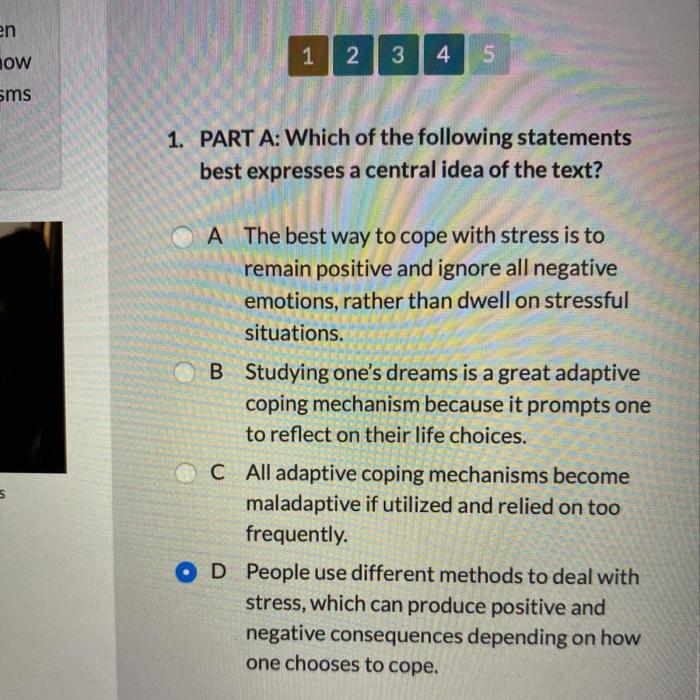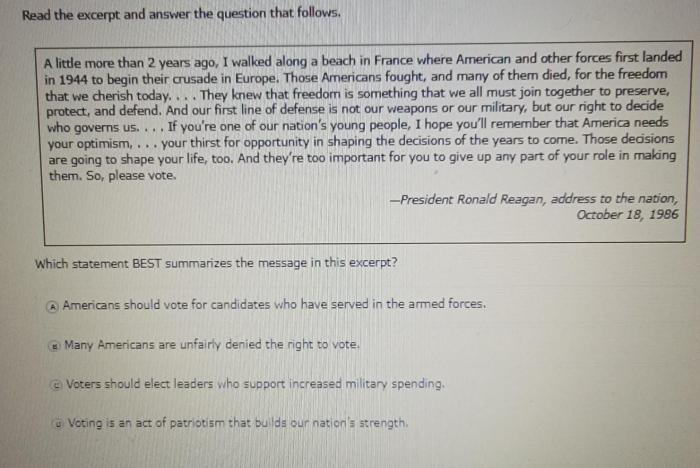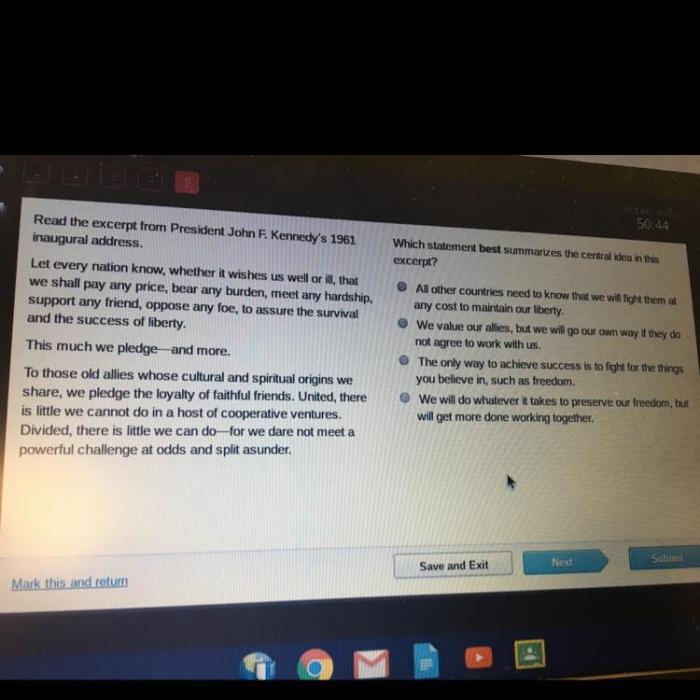Identifying the central idea of a text is crucial for comprehending its core message. Which statement best summarizes the central idea of the text? This question guides us on a journey to decipher the essence of a written work, unlocking its deeper meaning and significance.
The central idea, often expressed as a concise statement, encapsulates the main argument or thesis of a text. It provides a roadmap for understanding the author’s purpose and the key points developed throughout the writing.
Identifying the Central Idea

Identifying the central idea of a text is crucial for understanding its main message and purpose. It provides a concise summary of the author’s argument or perspective, allowing readers to grasp the essence of the text quickly and effectively.
The central idea is the core concept or thesis that the author is trying to convey. It is the foundation upon which the entire text is built and serves as the unifying element that connects all the supporting details and arguments.
Defining the Central Idea
The central idea is often stated explicitly in the text, typically in the introduction or conclusion. However, it can also be implied and requires careful analysis to uncover.
A well-crafted central idea should be:
- Clear and concise
- Specific and focused
- Supported by evidence from the text
Approaches to Identifying the Central Idea, Which statement best summarizes the central idea of the text
There are several approaches to identifying the central idea of a text:
- Read the text carefully:Pay attention to the main points and arguments presented by the author.
- Identify the topic sentence:The topic sentence is usually the first sentence of each paragraph and often expresses the main idea of that paragraph.
- Analyze the supporting details:Consider the evidence and examples provided by the author to support their claims.
- Look for repeated ideas or themes:Identify concepts or ideas that are mentioned or discussed throughout the text.
Examples of Central Ideas
Here are some examples of central ideas from various texts:
- In Martin Luther King Jr.’s “I Have a Dream” speech, the central idea is the belief that all people, regardless of race, deserve equal rights and opportunities.
- In Charles Darwin’s “On the Origin of Species,” the central idea is the theory of evolution through natural selection.
- In Jane Austen’s “Pride and Prejudice,” the central idea is the exploration of social class and the importance of love and marriage.
Top FAQs: Which Statement Best Summarizes The Central Idea Of The Text
What is the significance of identifying the central idea?
Identifying the central idea provides a foundation for understanding the author’s purpose, evaluating the text’s validity, and making informed interpretations.
How can I effectively analyze statements to determine the central idea?
Analyze statements by examining their content, considering their relationship to other statements, and identifying recurring themes or key concepts.
What are common pitfalls to avoid when analyzing statements?
Avoid relying solely on personal opinions, focusing on specific details without considering the broader context, or making assumptions that are not supported by the text.


